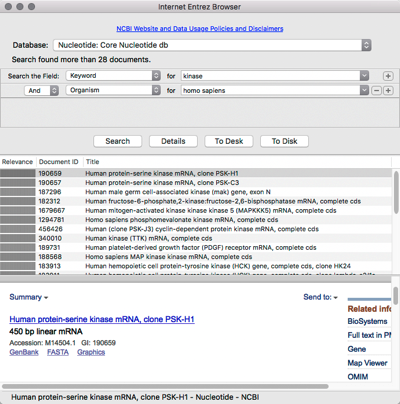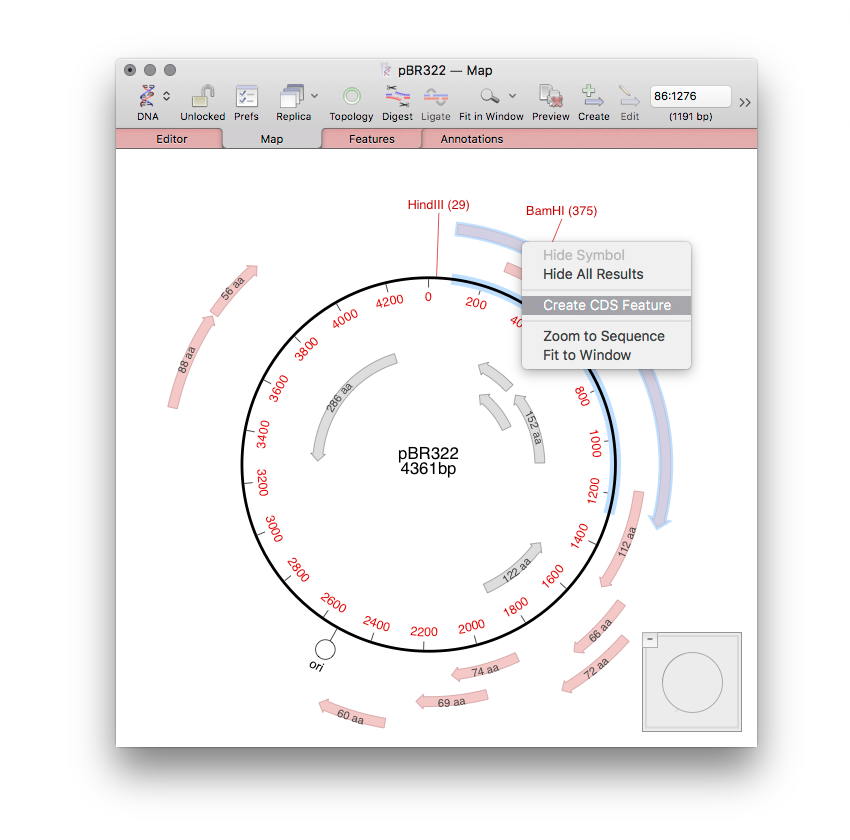Author: Chris
-
Opening multiple sequences as alignments or individual sequences
Many sequence formats contain multiple concatenated sequence entries. For example FASTA and Genbank are two formats capable of storing multiple individual sequences. By default MacVector will treat such sequences as alignments and open them in the Multiple Sequence Alignment editor. Most users who want to open such a file do want to see an alignment.…
-
Restoring file associations when MacVector no longer opens your sequences
Macs are pretty good at choosing the right application to open a document. For example when you double click on a .nucl document then it will open in MacVector. However, sometimes this file association breaks. Applications should coexist peacefully on a Mac, but sometimes a misbehaving app will corrupt these file associations and you will…
-
What can MacVector do for me?
Here’s what MacVector can do for your lab. Comparing sequences Whatever type of alignment your sequence needs, there’s a tool in MacVector. CRISPR Indel Analysis: Identify insertions and deletions following CRISPR editing of a target. Sequence assembly of NGS data against a reference genome or compare your sequencing against your new construct. Translated Multiple Sequence…
-

Searching and downloading sequences from Entrez
MacVector has integrated connectivity to the NCBI BLAST and Entrez databases. You can directly search Entrez for DNA or Protein sequences based on features, authors, keywords etc and directly download them into MacVector, complete with all features and annotations.
-
Eastern Great Lakes workshop tour in February
The MacVector team will be touring the Eastern Great Lakes for a series of workshops in February. We will be running workshops in Rochester NY, Buffalo NY, Ypsilanti MI, Cleveland OH, Wooster OH, Columbus OH and Cincinnati OH. Monday, Feb. 5th 10:00 – 12:00 University of Rochester, Rochester, NY 2:00 – 4:00 University at Buffalo,…
-

Using MacVector’s Auto Annotate tool to annotate blank sequences.
Have you ever been sent a plain unannotated sequence, or downloaded a sequence from Entrez and been disappointed as it doesn’t have the carefully curated graphical appearance of your favorite genes? Auto annotation solves both of these common problems. The basic idea is that you can scan the sequence against a folder containing a…
-

Adding a primer to MacVector’s Primer Database.
MacVector’s Primer Database tool makes it easy to store your lab’s regular primers. It allows you to save and retrieve primers from the Primer Database from the Primer3 and Quicktest Primer tools. You can also scan sequences for potential primer binding sites. The Primer Database will also store tails and allow you to specify…
-
RNASeq Expression Analysis with NGS data
If you have the Assembler module, MacVector can align millions of NGS reads from RNASeq experiments against large genomes and generate a coverage table displaying the relative expression levels of every gene in a genome. The key to this functionality is that you must have a reference genome with genes annotated as CDS or gene…
-
Annotating primers to your sequence with MacVector
Designing a pair of primers to amplify a single feature is pretty quick with MacVector. Once you have designed a pair of primers with MacVector, you can quickly annotate both the primers and product to your sequence template. The annotation contains a timestamp and the primer’s characteristics. It also contains the full sequence of the primer,…
-
Use a right-click in the Contig Editor tab to see if your contig can be circularized
MacVector 16 incorporates no less than THREE different de novo assemblers, phrap, velvet and SPAdes. While all are great assemblers, with each having their own specific advantages, none of them will generate a circular sequence from input reads. However, MacVector 16 also includes a new feature to help you with this. If you are assembling…
